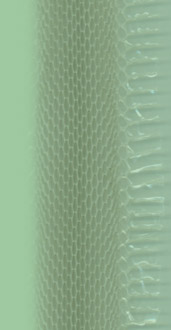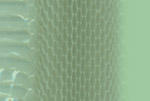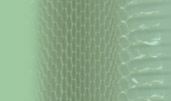









 |
 |
 |
 |
 |
 |

Keeping:
The terrarium should not be smaller than 80 x 40 x 80 cm (l x w x h), but the larger it is, the better. A spotlight (max. 40 W) and a fluorescent tube complete the technical furnishings. The sources of light should be installed outside of the terrarium, because water from misting could otherwise cause a short circuit. In addition, there is a risk that the snakes might burn themselves when they can get in direct contact with the light sources.
In my terraria, the air-temperature is about 25°C during the day, reaching between 35 and 38°C beneath the spotlight. During the night, these values decrease to room temperature (about 18 to 20°C). Dasypeltis atra should be provided with a night temperature of 12 to 15°C, otherwise this montane species will not do well, and you will not be able to enjoy it for a longer period of time. It also needs, like D. fasciata, a somewhat higher level of humidity. My terraria are decorated with climbing branches and cork tubes. The ground is covered with normal potting soil.
It is also recommendable to add an artificial or a live climbing plant (Scindapsus or Philodendron). Not only does this look very nice, but it also has a positive influence on the microclimate. Humidity should be between 50 and 60%. With fasciata and atra, an alternation of rainy and dry seasons is needed. D. fasciata only feeds at elevated levels of humidity (70 to 80%). Misting the terrarium with warm water once or twice a day is sufficient to emulate a rainy season. It is surely not necessary to flood the terrarium only because I am talking about a rainy season here. A large dish filled with fresh drinking water is a must, since Dasypeltis drink regularly. They also love to lick up water droplets off plant leaves.
The terraria for juveniles correspond to those for the adults as far as decoration and temperature are concerned, only they are smaller. I keep my animals, as far as possible, one by one, but at least sorted by sex. For my juveniles, I use two terraria; one for the ones that feed on their own, and one for the ones that don’t. This enables me to better monitor the problem cases. Most important is that the terraria are escape-proof. With many terraria, the overlapping sliding doors are often a weak point. The young snakes are particularly skillful escape artists.


